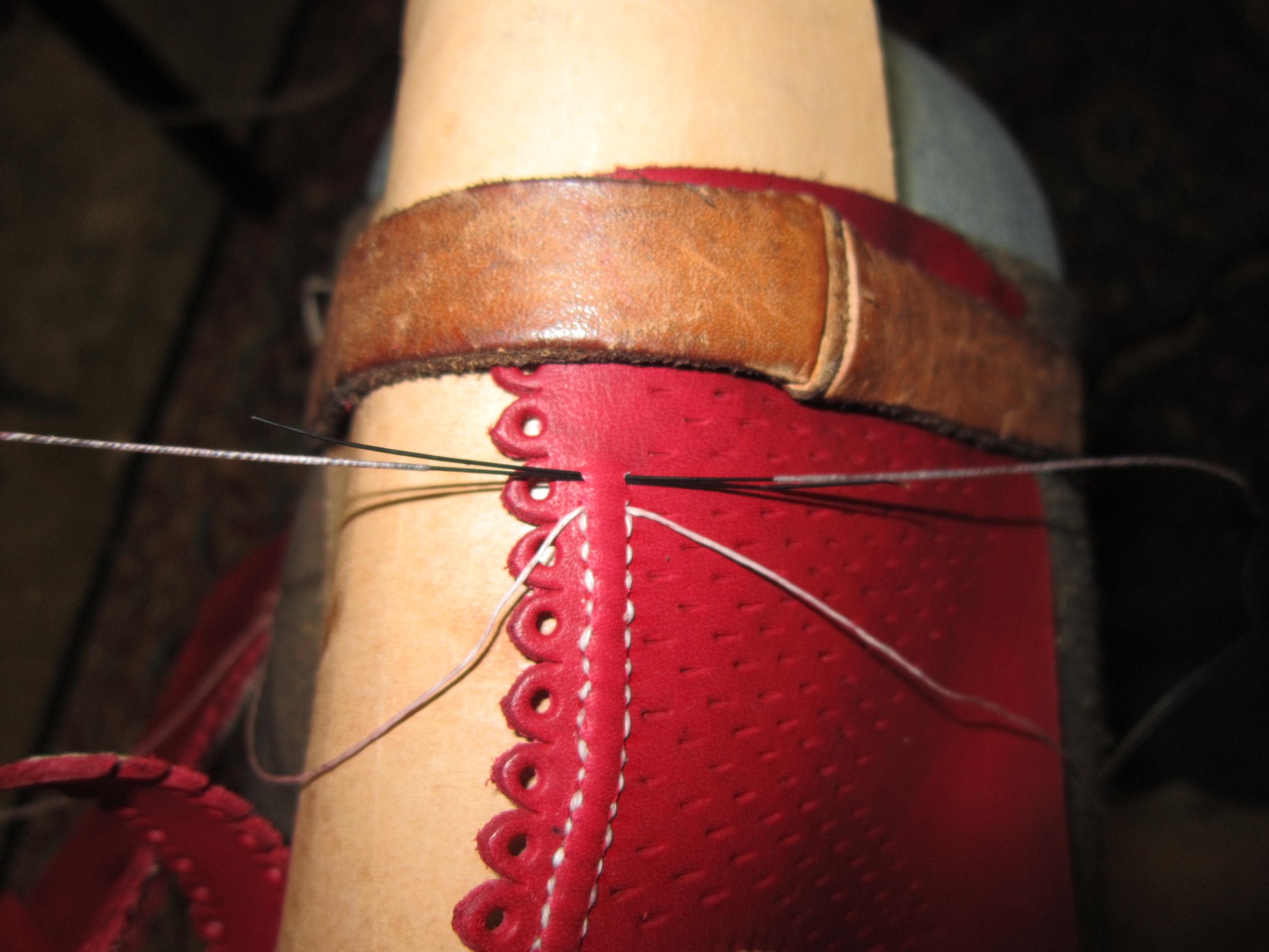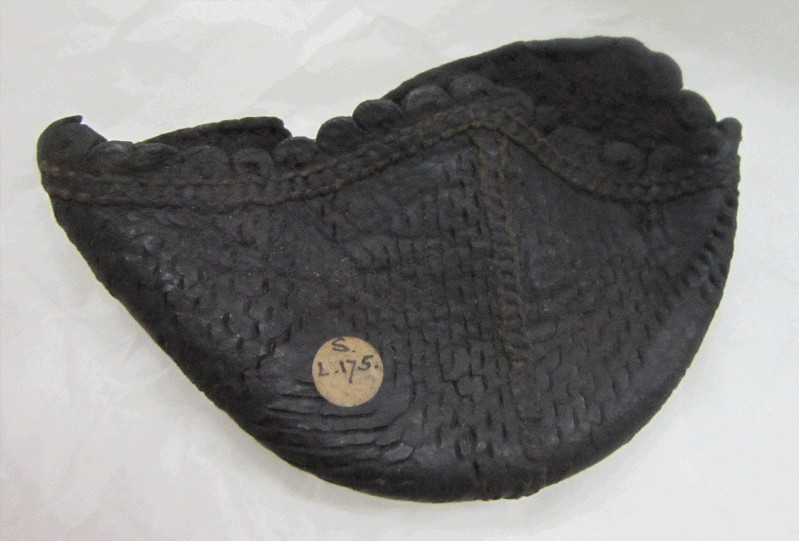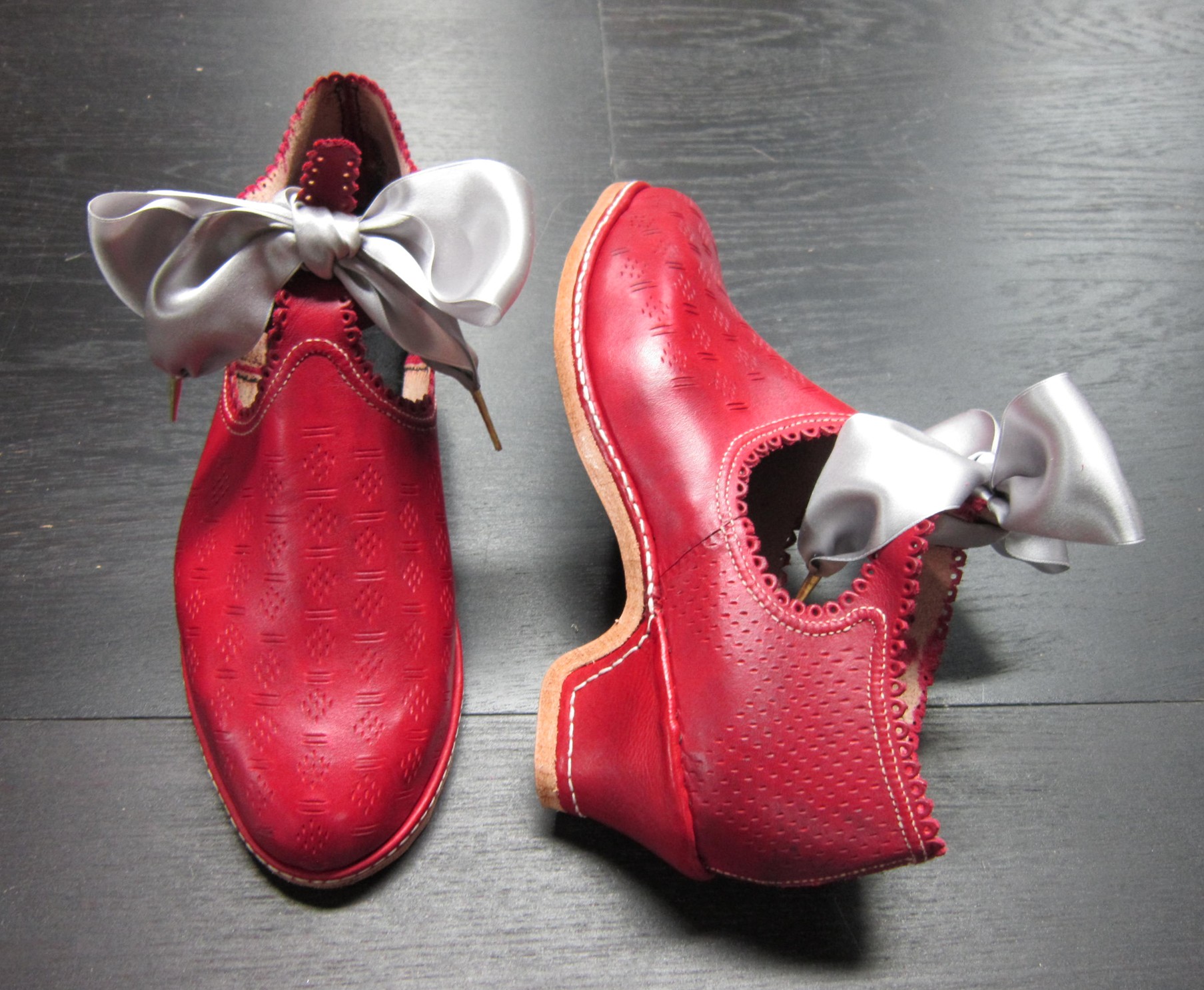Yes, another 1600s shoe, but hey – why quit when you have a good thing going? =) I do try and do new things with every piece, and this one was no exception. In this case, when I visited the Museum of London, I was fortunate enough to be able to look at many of the stored leather pieces that they had in the cabinets. I’m sure I mentioned it in a previous post – anyhow, one of the things that impressed me was the level of detail in so many of the shoes.
In some cases, there were lines of fine tunnel stitching along the surface and opening of the shoe. In fact, this was even visible on many shoes from the wreck of the Mary Rose in 1545, and those guys were sailors! A point of note is that a far majority of shoes had some kind of reinforcement along the opening, either a top band or some kind of stitching like this.
How about some background and construction shots:
You can see that I’ve pierced the hole already, and have just threaded the two waxed ends through it. The tricky business of this is that the hole cannot go through the bulk of the leather, but needs to grab enough to actually make a difference when it comes to reinforcing the opening. The shot on the right shows the original extant quarters with decorative pinks and an ornamented border, which I attempted to duplicate. That stitching used my smallest awl (the one on the far left) and 3 strands of 60/1 linen thread coated with white wax on some of the finest bristles that I had. It was slow going, but taking one’s time and not rushing is the key, like in so many things.
 |

|
|

Damn, those are pretty! I love that pierced edging — kinda makes my new Stratfords look dull tho 🙁
Thank you! But, this is what you get when paying for handmade…=)
Wow, I have enjoyed your site, thank you for an amazing collection of information and well photographed stages of construction. I am teaching myself shoe making, already being a saddler, a fashion technologist and enjoy greenwood working as a hobby. I found your pages from a link on the Elizabethan costume Facebook page. Thanks again, much appreciated resource :))
Hi Lella! Thank you very much for the compliments! Please feel free to write if you have any questions on shoemaking techniques or tools. As a saddler, you probably have a leg up on most, but I’m sure that you’ll find interesting differences between the two trades. =)
Hi, I have inherited a number of cordwainers’ lasts — women’s shoes, I think but maybe not looking at the above (both left and right) from size 1 to 4 of and of varying heel sizes, all made from cast iron with the initials ‘AJK’? and letters to indicate heel size and numbers to indicate shoe size. As my family on my maternal side were involved with shoemaking, I wonder if these lasts are of any importance. Both my parents have passed away so, sadly, I can’t ask them. I would be grateful for any information you might be able to offer me.
Hi Gill – it seems that you have a selection of iron lasts. These are primarily used for putting hobnails on the bottom of shoes. The idea is that the shoe is placed on the iron last and the hobnails are driven into the shoe and when they hit the iron last, they bend up and clinch to the bottom of the sole. Several of these are available on eBay, and were quite common in the 19th-20th century for “do-it-yourself” repairs.